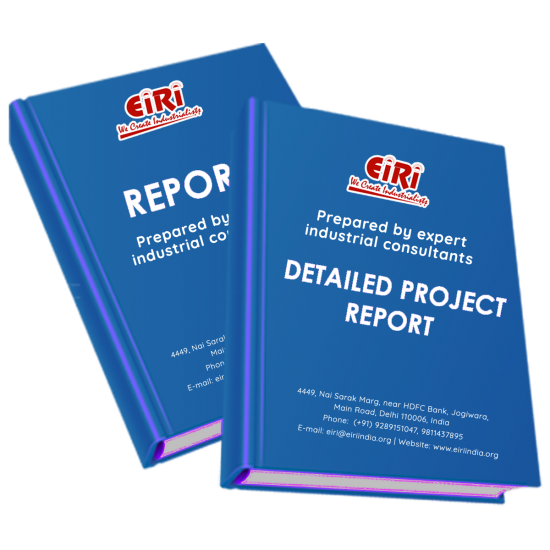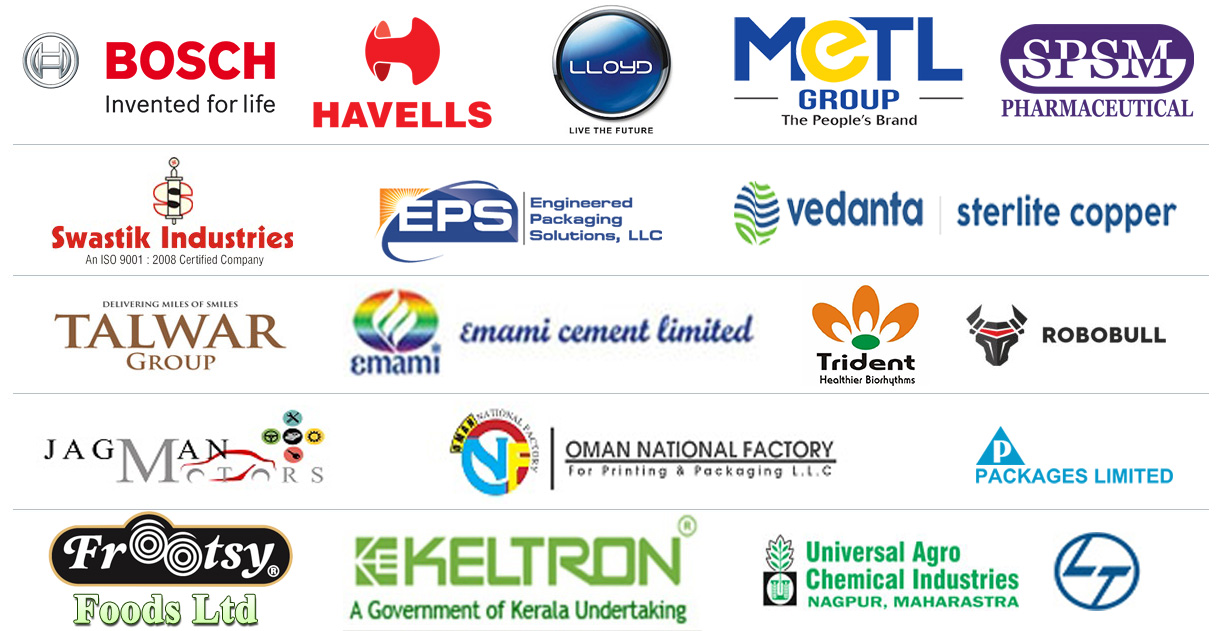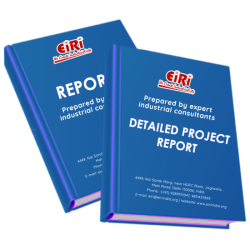Detailed Project Report on diethyl phthalate (cap: 40 tpd)

- More than 40 years of experience
- Managed by expert industrial consultants
- ISO 9001-2015 Certified
- Registered under MSME, UAM No: DL01E0012000
- 24/5 Research Support
Get your quesries resolved from an industry expert. Ask your queries before report or book purchase. - Custom Research Service
Speak to the our consultant to design an exclusive study to serve your research needs. - Quality Assurance
All reports are prepared by highly qualified consultants & verified by a panel of experts. - Information Security
Your personal & confidential information is safe & secure.
DIETHYL PHTHALATE (CAP: 40 TPD)
[CODE NO.4123]
With the exception of a few materials such as polyethyl methacrylate, nylon etc., the majority of plastics has to be mixed with other ingredient to process them conveniently. While some of the ingredients act mainly as cheapening agent without any way influencing physical or chemical properties, the majority of them are incorporated because they have definite & significant properties of the moulded article.
The thermoplastic, which can be reprocessed even after being brought to solid stage from plastic stage, like polyethylene. PVC, polystyrene, polyamides, cellulosic, acrylics, acetates etc. are hard, brittle & poor in mechanical properties where as when mixed with suitable plasticizer can be processed more conveniently by process like extrusion, injection & blow moulding. Just as fillers are absolutely essential for a thermosetting moulding powders, plasticizers are indispensable for termoplastics, particularly cellulosic.
Thus for plastic material to exhibit flexibility resilience & melt, flow, it must be `plasticizer'. Government of India has reserved the manufacture of D.E.P. in small scale sector only to secure small scale manufacturers. So all the facilities regarding raw materials procurement, marketability levies and taxes concessions etc are available to this unit also.
All the plant & machineries are also indigenously available. Therefore there is no hurdle in setting up this unit either within it or by the addition of an added substance which is knows as plasticizers. Without this, it would not be possible to make plastic sheeting, film & other flexible forms of plastics.
There are more than 350 types of plasticizers in the market all over the world and they are classified on the basis of chemical composition such as phthalates, phosphates, adipates epoxy etc. and on the basis of performance character such as primary secondary etc.
Among plasticizers, phthalates which are pthelic acid esters of boiling alcohols are the minor product of application & form nearly 70% of total plastisizer consumption. There are many type of phthalates which are used for this purposes, however their reprocessing is the same. The proposed scheme envisages the manufacture of diethylphthalate (DEP) in a small scale. The same set up of equipment may be utilisted for the manufacture of other, as necessary.
A plasticizer or softener is a substance or material incorporated in a material (usually a plastic or elastomer) to increase its flexibility, workability or distensibility. A plasticiser may reduce the melt viscosity, lower the temperature of the second order transition or lower the elastic modulus of the melt.
Diethyl phthalate (DEP) is a phthalate ester, namely the diethyl ester of phthalic acid. It is a clear substance that is liquid at room temperature and which does not occur in nature. It as a faint, disareeable odor and can be transferred from the plastics that contain it When burned, DEP produces toxic gases.
Since the compound is a suitable solvent for many organic molecules, it is often used to bind cosmetics and fragrances. Other industrial uses include plasticizers, detergent bases and aerosol sprays. Because of the frequent dermal exposure of humans to the chemical, the question of toxicity is crucial. Several studies suggest that DEP can cause damage to the nervous system as well as to the reproductive organs in males and females.
Exposure
Due to their use as plasticizers, diethyl phthalates are ubiquitous in the environment, especially near places of production and use. Biodegradation through microbially-mediated processes can result in products that can potentially harm microorganisms. There is also general evidence of widespread human exposure. Non-occupational exposure results from the diet, for example phthalate-coated medicines and nutritional supplements, and through consumer products. High occupational exposure was observed in workers directly manufacturing plasticizers. Studies suggest a high correlation between air and urine sample concentrations of short side-chain phthalates such as DEP, making inhalation an important route of exposure.
Structure and reactivity
Diethyl phthalate, or o-Benzenedicarboxylic acid diethyl ester consists of a benzene ring with two carboxylic acid ethyl esters attached to it in the ortho (1,2) pattern. It is a highly conjugated system, as the pi-cloud on the benzene ring, the p-orbitals on the carbonyl atoms and the lone pairs on the oxygens are all conjugated. The substituents are meta-directing, and they are ortho to each other, so all positions in the ring are more or less equally activated. Diethyl phthalate is likely to undergo biodegradation in the environment. Abiotic degradation processes such as hydrolysis, oxidation, and photolysis are unlikely to play significant roles in the environmental fate of diethyl phthalate.
Synthesis
Diethyl phthalate is produced by the reaction of phthalic anhydride with ethanol in the presence of a catalytic amount of concentrated sulfuric acid. Phthalic anhydride is produced by either the oxo process or the Ald- Ox process from ethanol and the oxidation of naphthalene or o-xylene. The purity of anufactured phthalate esters is reportedly between 99.70% and 99.97% with the main impurities being isophthalic acid, terephthalic acid and maleic anhydride.
Metabolism
Diethyl phthalate is hydrolyzed to monoester, monoethyl phthalate and ethanol after oral administration in the lumen of the gastrointestinal tract or in the intestinal mucosal cells. Hydrolysis of DEP also takes place at the kidney and liver after systemic absorption. After tissue distribution throughout the body, DEP accumulates in the liver and kidney. The metabolites are excreted in the urine. DEP is metabolized by carboxyl esterase, which is synthesized in the human liver. In vitro studies show that DEP reduces the glucuronyl transferase activity. It was also observed that the activity of peroxisomal enzyme carnitine acetyl transferase is increased in cultures of rat liver cells. Furthermore DEP induces the enzyme activity of catalase, which leads to hepatic peroxisome proliferation and possibly causes hyperplasia.
COST ESTIMATION
Plant Capacity 40 Ton/Day
Land & Building (12,000 sq.mt.) Rs. 4.61 Cr
Plant & Machinery Rs. 3.75 Cr
Working Capital for 1 Month Rs. 9.09 Cr
Total Capital Investment Rs. 17.82 Cr
Rate of Return 45%
Break Even Point 39%
- INTRODUCTION
- EXPOSURE
- STRUCTURE AND REACTIVITY
- SYNTHESIS
- METABOLISM
- BIODEGRADATION BY MAMMALS
- TOXICITY
- TERATOGENICITY
- LONG-TERM EFFECTS ON CHILDREN
- FUTURE INVESTIGATION
- USES & APPLICATIONS
- DEP DI ETHYL PHTHALATE (DEP) PLANT
- DISPOSAL
- MARKET POSITION
- SPECIFICATION OF DIETHYL PHTHALATE
- MANUFACTURERS/EXPORTERS/SUPPLIERS OF DIETHYL PHTHALATE (DEP)
- ESTIMATED SHARE OF DIFFERENT PHTHALATE PLASTIEIZERS IN TOTAL PHTHALATES PLASTICIZERS
- PROPERTIES OF PLASTISIZERS
- RAW MATERIALS DETAILS
- (1) PTHALIC ANHYDIRDE
- (2) ETHYL ALCOHOL
- (3) SULPHURIC ACID
- (4) ACTIVATED CHARCOAL
- SEQUENCES IN DIETHYL PHTHALATE MANUFACTURE
- REACTION
- PROCESS FLOW DIAGRAM
- MANUFACTURING PROCESS
- PROCESS FLOW SHEET FOR DEP MANUFACTURE
- MATERIAL SAFETY DATA SHEET OF DIETHYL PHTHALATE
- USE OF THE SUBSTANCE/PREPARATION
- HAZARDS IDENTIFICATION
- CLASSIFICATION OF THE GHS
- GHS LABEL ELEMENTS
- COMPOSITION/INFORMATION ON INGREDIENTS
- FIRST AID MEASURES
- FIRE FIGHTING MEASURES
- FIRE FIGHTING MEDIA AND INSTRUCTIONS
- ACCIDENTAL RELEASE MEASURES
- HANDLING AND STORAGE
- EXPOSURE CONTROLS / PERSONAL PROTECTION
- PHYSICAL AND CHEMICAL PROPERTIES
- PHYSICAL STATE (20°C)
- LIQUID
- STABILITY AND REACTIVITY
- TOXICOLOGICAL EVALUATION, CHARTERIZATION OF DIETHYL PHTHALATE
- CHEMICAL NAMES
- TRADE NAMES AND ABBREVIATIONS
- STRUCTURAL FORMULA
- EMPIRICAL FORMULA
- PURITY, COMPOSITION AND SUBSTANCE CODES
- PHYSICAL PROPERTIES
- FUNCTIONS AND USES
- MOST COMMON USES OF DEP IN COSMETICS AND PERFUMES
- PRINCIPLES OF PLANT LAYOUT
- STORAGE LAYOUT
- EQUIPMENT LAYOUT
- SAFETY
- PLANT EXPANSION
- FLOOR SPACE
- UTILITIES SERVICING
- BUILDING
- MATERIAL-HANDLING EQUIPMENT
- RAILROADS AND ROADS
- MAJOR PROVISIONS IN ROAD PLANNING FOR MULTIPURPOSE SERVICE ARE:
- PLANT LOCATION FACTORS
- PRIMARY FACTORS
- SPECIFIC FACTORS
- EXPLANATION OF TERMS USED IN THE PROJECT REPORT
- PROJECT IMPLEMENTATION SCHEDULES
- INTRODUCTION
- PROJECT HANDLING
- PROJECT SCHEDULING
- PROJECT CONSTRUCTION SCHEDULE
- TIME SCHEDULE
- SUPPLIERS OF RAW MATERIAL
- PHTHALIC ANHYDRIDE
- ETHYL ALCOHOL
- SULPHURIC ACID
- ACTIVATED CARBON
- ACTIVATED CARBON MANUFATURERS & EXPORTERS
- ACTIVATED CARBON POWDER
- SUPPLIERS OF PLANT & MACHINERY
- REACTION VESSEL
- DISTILLATION PLANT
- VACUUM PUMPS
- BOILERS
- STORAGE TANKS
- D.G. SETS
APPENDIX – A:
1. COST OF PLANT ECONOMICS
2. LAND & BUILDING
3. PLANT AND MACHINERY
4. FIXED CAPITAL INVESTMENT
5. RAW MATERIAL
6. SALARY AND WAGES
7. UTILITIES AND OVERHEADS
8. TOTAL WORKING CAPITAL
9. COST OF PRODUCTION
10. PROFITABILITY ANALYSIS
11. BREAK EVEN POINT
12. RESOURCES OF FINANCE
13. INTEREST CHART
14. DEPRECIATION CHART
15. CASH FLOW STATEMENT
16. PROJECTED BALANCE SHEET
How to Make Project Report?
Detailed Project Report (DPR) includes Present Market Position and Expected Future Demand, Technology, Manufacturing Process, Investment Opportunity, Plant Economics and Project Financials. comprehensive analysis from industry covering detailed reporting and evaluates the position of the industry by providing insights to the SWOT analysis of the industry.
Each report include Plant Capacity, requirement of Land & Building, Plant & Machinery, Flow Sheet Diagram, Raw Materials detail with suppliers list, Total Capital Investment along with detailed calculation on Rate of Return, Break-Even Analysis and Profitability Analysis. The report also provides a birds eye view of the global industry with details on projected market size and then progresses to evaluate the industry in detail.
We can prepare detailed project report on any industry as per your requirement.
We can also modify the project capacity and project cost as per your requirement. If you are planning to start a business, contact us today.
Detailed Project Report (DPR) gives you access to decisive data such as:
- Market growth drivers
- Factors limiting market growth
- Current market trends
- Market structure
- Key highlights
Overview of key market forces propelling and restraining market growth:
- Up-to-date analyses of market trends and technological improvements
- Pin-point analyses of market competition dynamics to offer you a competitive edge major competitors
- An array of graphics, BEP analysis of major industry segments
- Detailed analyses of industry trends
- A well-defined technological growth with an impact-analysis
- A clear understanding of the competitive landscape and key product segments
Need Customized Project Report?
- Ask for FREE project related details with our consultant/industry expert.
- Share your specific research requirements for customized project report.
- Request for due diligence and consumer centric studies.
- Still haven't found what you're looking for? Speak to our Custom Research Team
About Engineers India Research Institute:
Note: We can also prepare project report on any subject based on your requirement and country. If you need, we can modify the project capacity and project cost based on your requirement.
Our Clients

Our Approach
- Our research reports comprehensively cover Indian markets (can be modified as per your country), present investigation, standpoint and gauge for a time of five years*.
- The market conjectures are produced on the premise of optional research and are cross-accepted through associations with the business players
- We use dependable wellsprings of data and databases. What's more, data from such sources is handled by us and incorporated into the report
Why buy EIRI reports?
- Our project reports include detailed analysis that help to get industry Present Market Position and Expected Future Demand.
- Offer real analysis driving variables for the business and most recent business sector patterns in the business
- This report comprehends the present status of the business by clarifying a complete SWOT examination and investigation of the interest supply circumstance
- Report gives investigation and top to bottom money related correlation of real players/competitors
- The report gives gauges of key parameters which foresees the business execution























